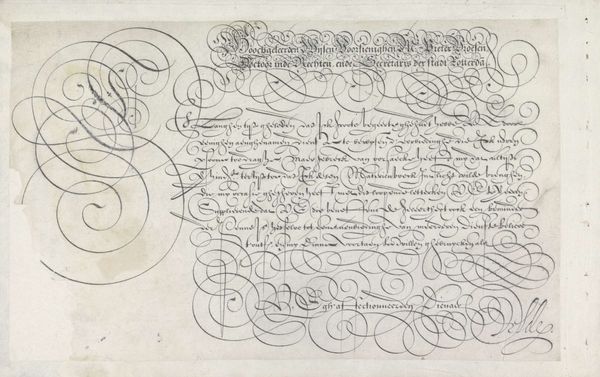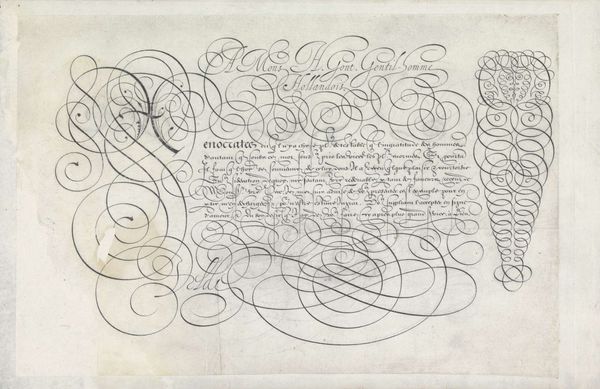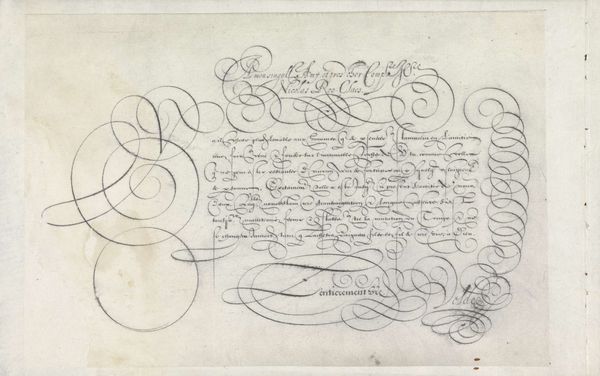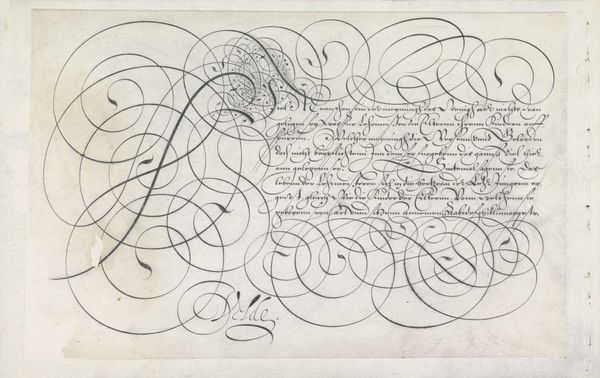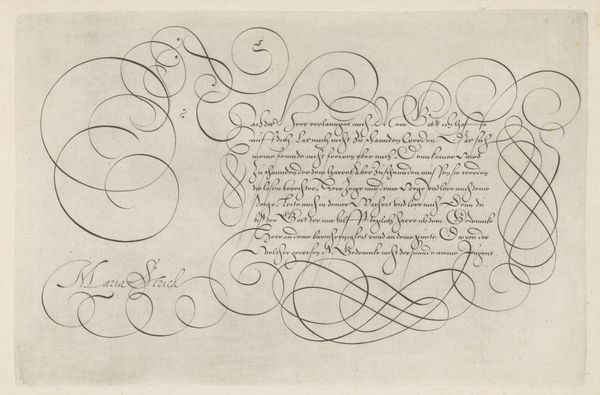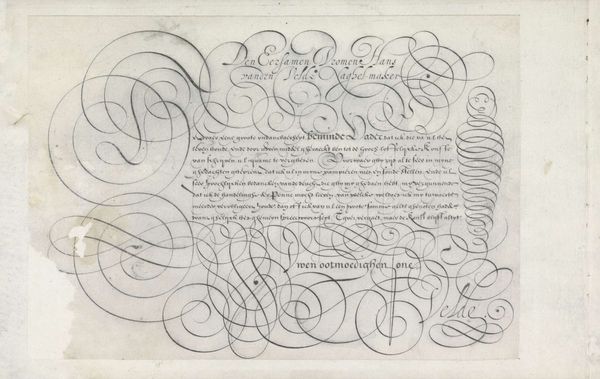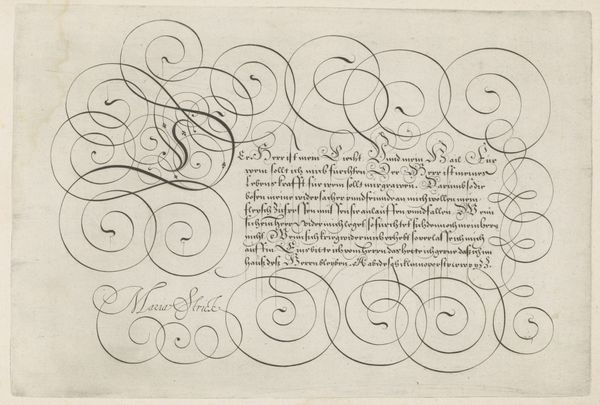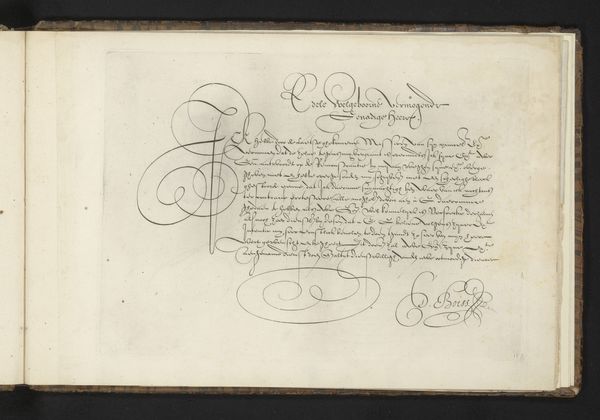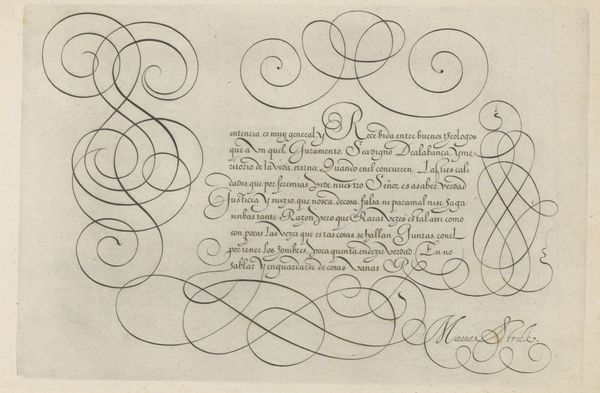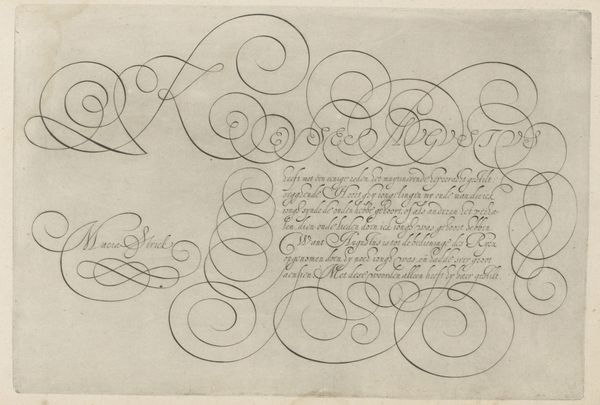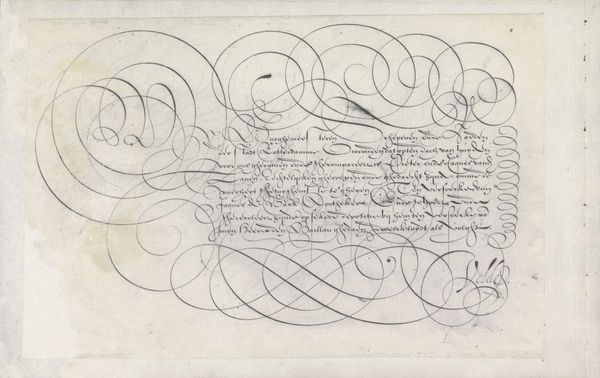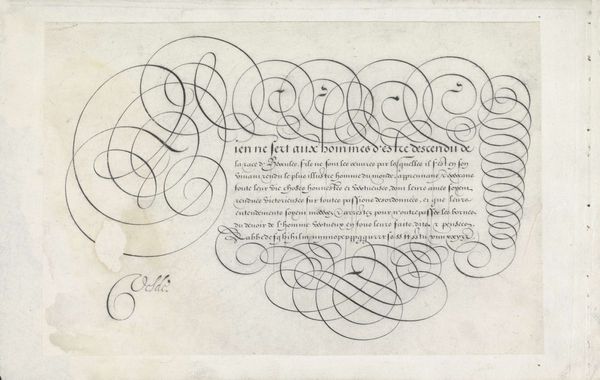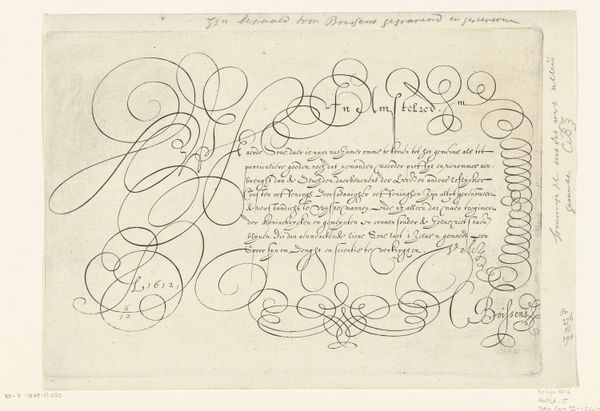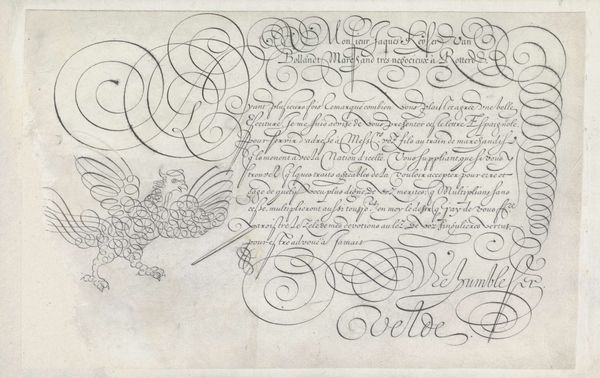![Schrijfvoorbeeld: A mon singul[ier] amy (...) by Jan van de Velde I](/_next/image?url=https%3A%2F%2Fd2w8kbdekdi1gv.cloudfront.net%2FeyJidWNrZXQiOiAiYXJ0ZXJhLWltYWdlcy1idWNrZXQiLCAia2V5IjogImFydHdvcmtzLzRkMjM4MTdiLTZhYjEtNDQwNy1iNTVhLWNiMzJhMWZlZTEwZS80ZDIzODE3Yi02YWIxLTQ0MDctYjU1YS1jYjMyYTFmZWUxMGVfZnVsbC5qcGciLCAiZWRpdHMiOiB7InJlc2l6ZSI6IHsid2lkdGgiOiAxOTIwLCAiaGVpZ2h0IjogMTkyMCwgImZpdCI6ICJpbnNpZGUifX19&w=3840&q=75)
drawing, paper, ink
#
drawing
#
paper
#
personal sketchbook
#
ink
#
calligraphy
Dimensions: height 224 mm, width 339 mm, height 260 mm, width 370 mm
Copyright: Rijks Museum: Open Domain
This is a writing sample by Jan van de Velde I, etched into paper sometime before 1623. The most prominent element is the elegant line work. It appears almost effortless, yet it is carefully controlled and precise. The making of an etching like this begins with a metal plate, likely copper. The artist would have coated this with a waxy ground, then used a needle to scratch the design, exposing the metal beneath. The plate is then submerged in acid, which bites into the exposed lines, creating grooves. Ink is applied, filling these grooves, and the surface is wiped clean. Finally, the plate and paper are run through a press, transferring the ink to the page. This was a laborious process that required skill and training. It speaks to the value placed on craft and refinement in the early 17th century, reflecting a society deeply invested in the artistry of everyday objects. Understanding these steps of production helps us appreciate the work that went into even something as seemingly simple as a writing sample, blurring the lines between fine art and craft.
Comments
No comments
Be the first to comment and join the conversation on the ultimate creative platform.
